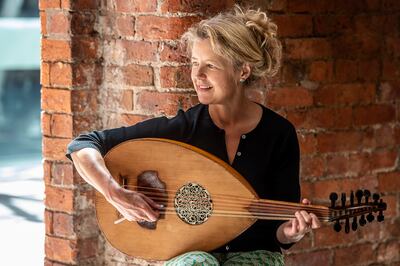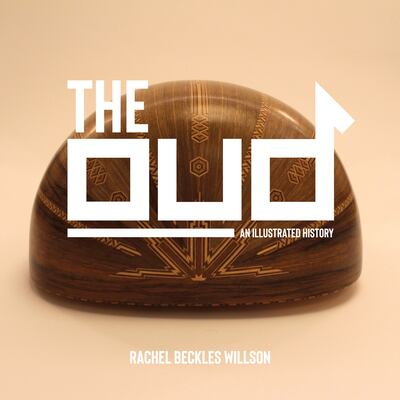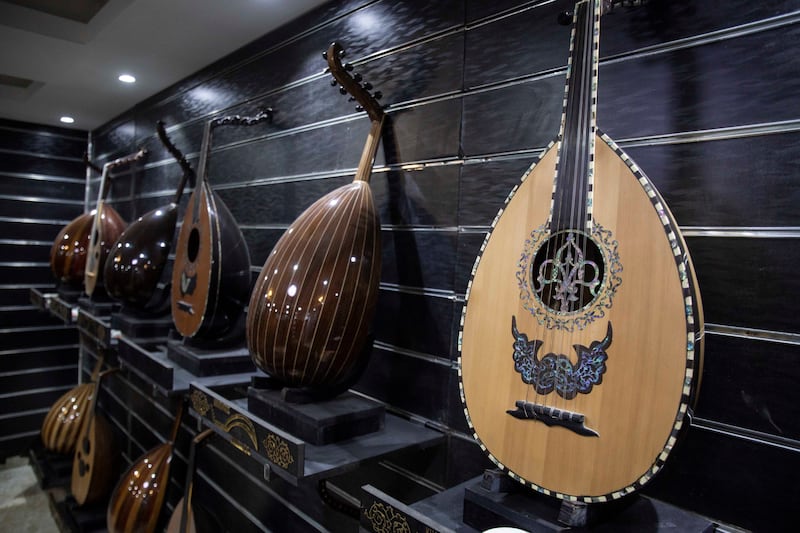To the untrained eye, an oud might appear as an pear-styled musical instrument with a short neck and strings running along the length. But as Rachel Beckles Willson writes in her introduction to The Oud: An Illustrated History, it is “not just a beautiful pear-shaped box, neck, and strings; rather, it has long been a link to the world of bereavement that allows new voices to be brought to life. The construction of the oud is bound up with longing for the recuperation or transformation of what seems lost.”
Willson, a scholar and composer, traces early versions of oud all the way back to the ancient Akkadian empire, Egypt, Central Asia and Persia. There is evidence of the use of ovoid lutes in Gandhara and Bactria, which incorporated parts of modern day Uzbekistan, Afghanistan, Tajikistan and Pakistan. But it was under the pre-Islamic Sassanid empire that the first written records of the oud, known in Persia as the barbat, can be found.

However the barbat’s exact place of birth is not clear – some scholars have claimed it originated in Jahrom, Iran, while others have argued it to be Merv, Turkmenistan. It is also not known when the Arabs started using it, but Willson writes that from the sixth century onwards literary sources suggest that the lute had long been played by the qaynat (dancing girls) in the Hijaz.
Today the oud is often associated with male virtuosos. However, Willson writes that in the ancient Middle East and Egypt women played instruments like tambourines, flutes and drums in courts and temples. The earliest oud players after the advent of Islam were also often women. There were “thousands of women who served as oud players and singers in the Abbasid times, the vast majority of whose names are lost.” A prominent qaynat was Arib Al Mamuniya, an accomplished singer and oud player during the caliphates of Al Amin and Al Mamun – the two sons of Harun Al Rashid, the fifth caliph of the Abbasid Caliphate.
The construction of the oud followed certain mathematical rules, with an ideal ratio of 1:2:3 given by ninth century philosopher Al Kindi for its depth, width and vibrating string length. Willson writes how, according to the ancient Pythagorean theory of pitch, a ratio of 3:2 was seen as “pure”. At the same time Platonic thinking connected “mathematical ratios to cosmology, and the ‘microcosm’ of humanity within that.” Al Kindi was the first to apply these theoretical connections to the oud. “Arab writers such as Al Kindi had argued that the pitch ratios Pythagoras had identified in string resonances would affect the Platonic ‘microcosm’ of the human being.”

While the oud is best known for its popularity in the Arab world, the instrument has spread to distant corners of the globe, from Indonesia to parts of Africa. Willson details how it reached Europe through Muslims living in southern Europe from the ninth to 13th century, with the modern lute believed to be derived from the oud played by the Umayyads. The 12th Palatine Chapel in Palermo, Sicily, has oud players painted on the ceiling and Islamic style muqarna (decorative vaulting), and was built some time after the Normans conquered the island once ruled by the Fatimids.
Willson has done extensive research. The topics covered include how the instrument was built, the materials used for its construction (a recent innovation being to replace the wood used for the bowl with carbon fibre), the variations in the types of ouds, its changing repertoires and the lives of past and present virtuosos, such as the Iraqi musician Munir Bashir and Syrian-Egyptian film star Farid El Atrash. The text is enriched with illustrations, such as ancient Gandharan friezes, a drawing of various types of ouds by Napoleon's team in Egypt and more generally ouds of various shapes and sizes.
The Oud will appeal not only to aficionados of chordophones – instruments that use vibrating strings to make sound – but anyone with curiosity about the culture and history of the Middle East.
The Oud: An Illustrated History is out on November 14






